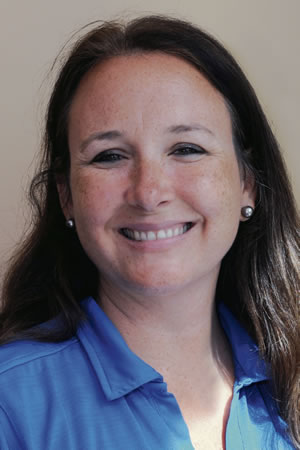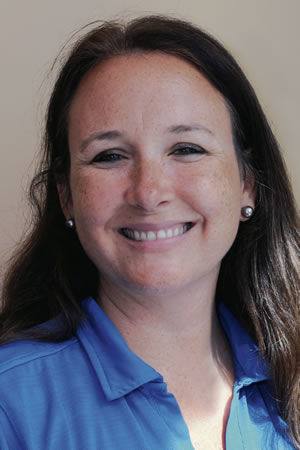Occupational Therapy Month
Koko Deryke
Clinical specialist for occupational therapy at REHAB
Where did you receive your schooling and training?
I received my degree in occupational therapy from the University of Puget Sound, and I’m currently enrolled in an online low-vision program at the University of Alabama, Birmingham.
How long have you been a practicing occupational therapist?
I have been working as an OT for 17 years, all of which have been at Rehab Hospital of the Pacific.
What is your role at REHAB?
In addition to providing patient care, I train our new inpatient OT staff. I also work on developing new programs, such as our vision program.
Is the vision program new?
REHAB’s occupational therapists have addressed visual problems from traumatic injuries, such as brain injury or stroke, as part of our occupational therapy services. However, over the last few years, we have increased our focus in this area. Vision includes our ability to see information and then process what is seen. As we age, our visual abilities may slowly decrease. Blurry vision, cataracts and glaucoma are common problems that may occur as we get older.
Following traumatic injuries, such as brain injuries and stroke, different visual problems may be experienced. Patients may have difficulty in areas such as visual processing (interpreting the information that we see), visual field loss, and also may experience double vision. These deficits may impact patients’ ability to safely interact with their environment and complete basic tasks.
Because of the high incidence of visual problems following traumatic injuries, our patients’ visual abilities are routinely screened. Vision exercises are then initiated based on these findings. Our Vision Center provides our patients a place to perform vision exercises and learn compensatory strategies. Through a generous grant from HMSA, we were able to purchase our new state of the art technology called Dynavision.
What is Dynavision?
It’s a visual/motor and cognitive training system that helps to improve eye-hand coordination, reaction time and speed. In a hospital setting, we use it to treat visual field deficit and visual disorders. An interesting fact is that it was originally developed to improve visuomotor skills for college and professional athletes. It has transitioned into the health care setting, and has been shown to improve speed and accuracy of absorbing and processing visual information. The machine allows us to work with the patient in a sitting or standing position, and it can be as simple as scanning the board to watch for one of the 64 buttons to light up, or as challenging as reaching your hand to tap a lit-up button while reciting seven numbers flashing in front of you. Patients enjoy using it – it’s really fun, and they like to beat their previous score or time.
What is low vision?
Low vision is a loss of visual sharpness. Individuals with low vision have difficulty seeing even with corrective lens or surgery. Therefore, in our Vision Center, our occupational therapists will work with patients on the use of compensatory strategies to adjust for visual loss.
Does occupational therapy for low-vision patients help rehabilitate them and get them back in the work field?
No, occupational therapy is not work-related. Occupational therapy focuses on the job of daily living – things like eating, hygiene, dressing, getting on and off the toilet or in and out of the tub. We also address homemaking skills like meal preparation, household chores, and hobbies and leisure activities. We want people to be able to continue to engage and participate in their everyday activities. Imagine, if you can’t complete the activity in the dark, it will be impacted by a visual deficit, so as therapists, we train the patient to maximize the use of their remaining vision.
Do you help people recover from vision loss or damage?
We can improve their functional vision, not make them see better. It is also important they have regular appointments with their eye doctor. We teach them compensatory techniques, for example, scanning their environment to be aware of trip hazards or reading street signs. We also can recommend certain vision aids, such as using magnifying glasses and proper lighting, that will help make seeing things easier, for example, following a recipe or looking at their TV guide.
What ages do you generally work with?
Our primary patient population is adults. We also work with the adolescent population mainly in our brain injury program.







